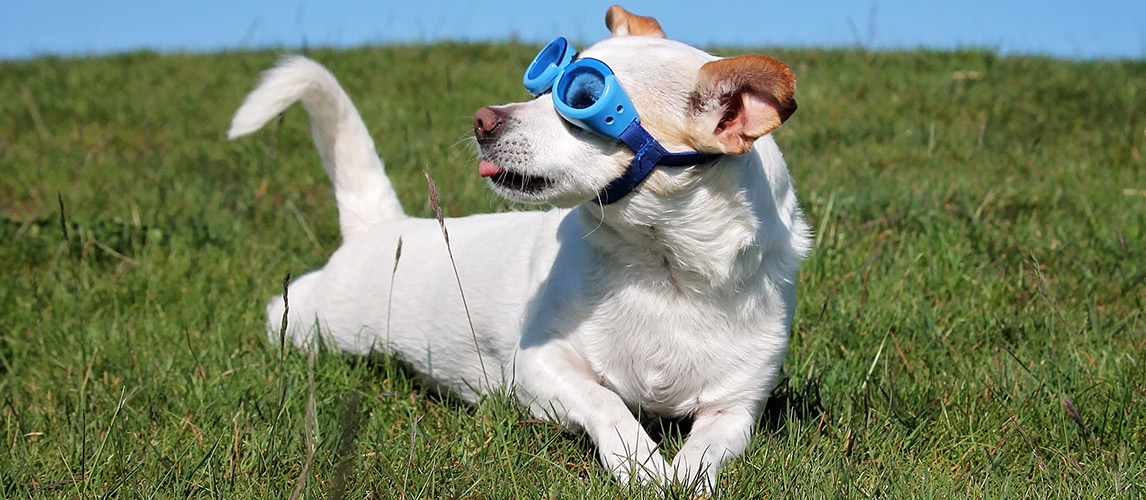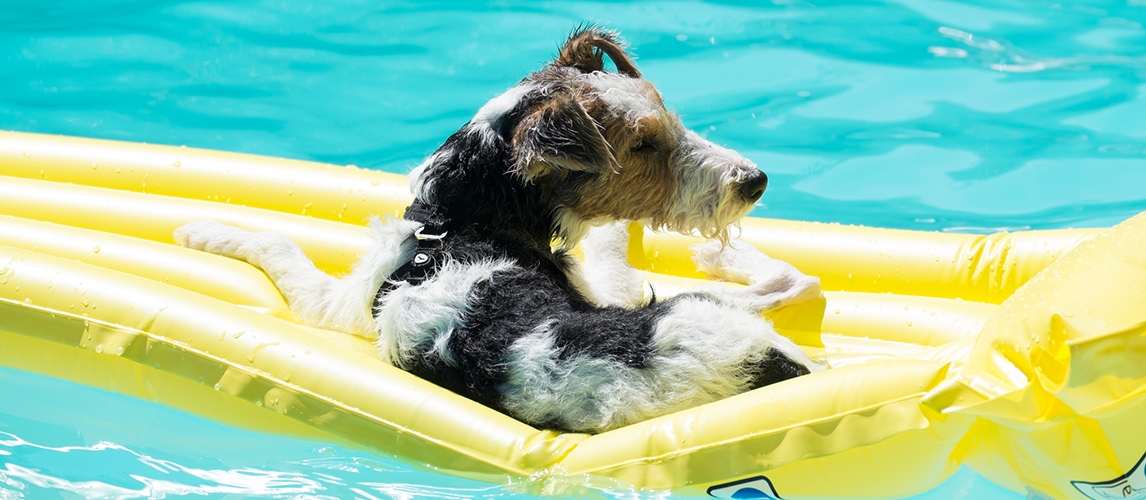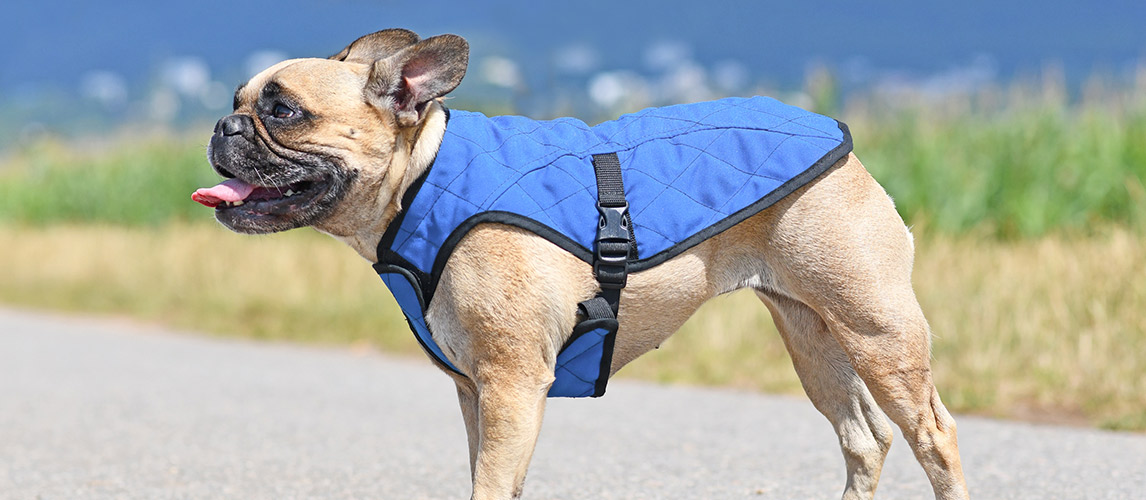Sunburn is a type of radiation burn typically caused by exposure to the Ultraviolet Rays of the sun. As much as humans are prone to this condition, dogs too are likely to be affected by this problem. Frequent sunbathing, visits to the beach or walks underneath the scorching heat of the sun are usually the cause of this. While it may appear to be inconsequential to some people, dogs too suffer from sunburns and the pain caused by its adverse effects.
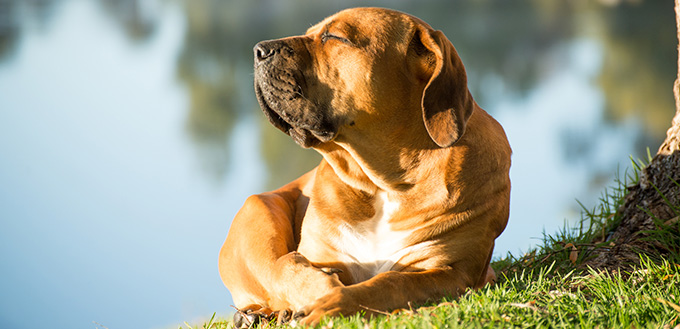
Which Dogs Are In Danger Of Being Sunburnt?
In general, dogs of all breeds are in danger of being sunburnt during hot weather conditions. However, the canines with thin coats or the ones that are hairless tend to get burnt more easily. Dogs which suffer from albinism or have white fur also suffer due to the lighter complexion underneath.
Other dog breeds like bulldogs often lie on their backs exposing their tummy towards the rays of the sun which also puts them in the danger of being sunburnt. Apart from bulldogs, other furry breeds also have a fair chance of being affected as their skin is exposed to the rays of the sun but their chances are slimmer as their skin is more pigmented compared to white colored dogs and albinos.
Signs Of Sunburn
The typical symptoms of sunburn include reddened skin which is sensitive to touch accompanied by cracked, crusty or blistered skin. The parts that are more vulnerable to sunburn are the stomach, ears, nose, areas around the eyes and exposed skin with thin coats. The burn may also be identified with loss of hair and their curling tips of the ears.
Apart from these traits, another way to identify sunburn is by observing the behavior and actions of your pup. When burnt, they will constantly keep scratching or pawing at the affected areas which will only aggravate their condition. Accompanied by whimpers and itching, they will slink away from touches and seek out cooler places around the house.
In severe cases, they may develop a fever and weakness from the inflammation. Most effects will show after an hour to being exposed and reach its worst on the third day.
Types Of Burns And Their Impact
The degree to which your pup may be affected depends on certain factors like the quantity of pigmentation in their skin, their capacity of producing melanin and the extent to which he/she was exposed to the UV rays of the sun. However, the burn can be classified into three categories depending on the factors stated above:
- Superficial partial thickness burns – In this case, only the top layer of the skin is affected resulting in reddening of the skin with no blisters.
- Deep partial thickness burns – This kind of burn not only agitates the top layer of the skin but a small number of those lying underneath. Luckily the dogs are free from blisters.
- Full thickness burns – The burn leaves an impact on all the layers of the skin and possibly the tissues beneath them. The dog suffers from acute pain and may need veterinary attention as blisters form on the affected areas.
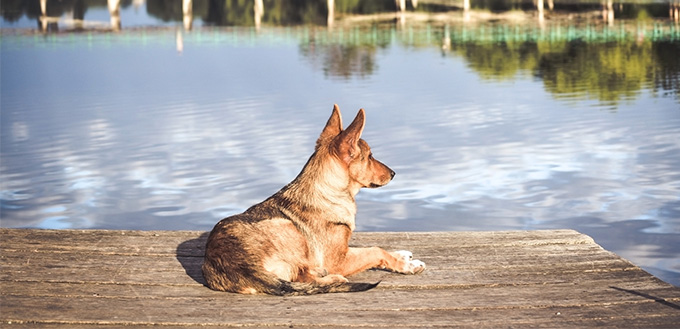
Treating The Wounds
The treatment usually varies in accordance to which of the categories stated above your pup falls into. In case your dog falls into the first two categories, you may be able to nurse it back to health at home using traditional methods.
On the other hand, full thickness burns will require veterinary attention as your pup will be forced to take full brunt of the burn. However, it is necessary to address the problem as soon as it has been noticed leaving no room for further damage or distress.
Applying Home Remedies
- Cold water spray
The first advice would be to be heavily reliant on one of the most essential elements of nature – water. It will soothe your dog’s skin and take away the searing pain caused by the inflammation. Take a spray bottle and fill it with cold water. Use it to spritz a generous amount of water on the agitated area from time to time. This will replace the heat and cool it down to lower temperatures easing the pain.
- Cold compress
In case your pup dislikes being sprinkled with water, a more handy method would be to resort to cold compressing instead. Dip a clean and sterile cloth in cold water and dab it onto the skin of your pup. Be sure to avoid rubbing it on the skin instead of dabbing as it may lead to further itchiness. Repeat the process several times and you will get back a healthy puppy in no time.
- Ice cube treatment
Though the water has now changed its state to solid, it will produce the same results as before with an additional benefit. Not only will it soothe the pain caused by the burn and reduce inflammation, but the ice will also make sure the affected area goes numb. Hold the cube directly onto the skin and pat. If needed, wrap them up in a thin cloth.
- Witch hazel
Witch hazel is an astringent lotion which is anti-inflammatory and reduces skin irritation. Use small amounts and dab it onto the skin but make sure not to use a liberal amount to avoid any toxic effects it may have on your dog.
- Oatmeal soaks
Like witch hazel, oatmeal too can ease and soothe inflammation and be used as a remedy for any type of canine skin irritation. Commercial products could be used but it is best to use home-made remedies. You can either grind it to a fine powder and mix it with water in the tub or fill a cotton sock with raw, plain oatmeal and let the water run via it as you load the tub with water.
- Aloe Vera
For years, Aloe Vera has been used to treat burns for its cooling effect along with other properties including being an anti-inflammatory substance. Even though it has been deemed safe for use on humans, precaution needs to be taken before using it on your pup for it may have adverse effects if ingested.
It is best to first test it on your dog and look for any signs of irritation. The gel can be used directly from the plant or you may use dog-friendly commercial products containing aloe like a gel or lotion. It will heal the burn and also moisturize the cracked skin.
- Vitamin E
Pop a capsule of Vitamin E and disperse its contents onto the inflamed skin but limit its use to only once or twice every 24-hours.
- Other anesthetics or anti-inflammatory sprays
If none of the above tricks bear fruit, you could always resort to using Lidocaine and Solar Caine or other anesthetics to desensitize the pup’s skin. However, it is important that you contact your vet before using such drugs. Do the same before using other anti-inflammatory sprays or products. If given the green signal, make sure that your doggo doesn’t end up ingesting those products which will only give rise to further problems.
Related Post: Best Sunscreens for Dogs
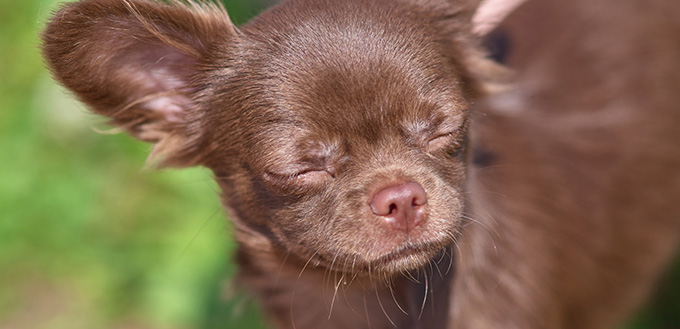
Veterinary Treatment
In case of full-thickness burns, your dog will require veterinary treatment. As per the diagnosis, treatment will be provided via intravenous therapy (injecting fluids in the veins) or giving anesthetics to numb the pain. The intravenous therapy will help in delivering the proper medication and prevent dehydration. They may further use certain creams or lotions containing cortisone or other agents with antibacterial and antifungal properties to avert infections.
Prevention
As the saying goes, prevention is definitely better than cure. Hence, best to avoid the hassle than to have to struggle with it in the future.
Some Preventive Methods May Be:
- Avoid shaving coats – As plausible as it may seem to shave your pup’s fur in the summer, do not attempt to shave its coat thinking that it would cool him or her down which it definitely will but at the cost of being exposed to the UV rays. The fur prevents exposure and keeps the skin protected.
- Avoid walks in midday – Midday is probably the worst possible time for you and your doggy to go on walks or play outdoors. The sun provides scorching heat and the UV rays are in full effect at this hour.
- Provide shade – If exposure to the sun is inevitable then the best you can do is provide shade. Play or walk with your pup under shady trees or build an outdoor kennel so that when it gets too hot, he or she will eventually retire to the rest house. Carrying an umbrella helps too!
- Sunscreen – This is a must have for all dog owners. Pet stores sell dog-friendly sunscreens like Epi-Pet, Petkin Doggy Sunwipes etc. So go and grab one if it still hasn’t been included in your dog kit yet. Apply generous amounts before going outside and make sure the sunscreen has an SPF above 15.
- Clothing – Although hats or linen shirts may not fully protect the pup, but it can be added to the list as an additional precaution. It may prove to be a good barrier against the sunlight.
You May Also Like: Umbrellas for Dogs and Dog Hats
All dog owners know what a gift it is to have a dog as a pet in your life. But with it comes the huge responsibility of protecting the pup too. It is essential to provide it its necessities and take care of it like one of our own because, at the end of the day, they too suffer the way we do when in pain.
More Pet Product Reviews
Tick Repellent for Dogs
Dog DNA Tests
Flea Treatments for Dogs
Flea Collars for Dogs
Dewormers For Dogs
Essential Oils for Fleas
Flea Carpet Spray & Powders
CBD Hemp Oil for Dogs
Paw Protection Waxes For Dogs
Liquid Bandage for Dogs
Sources:
- Dr. Jennifer Coates, DVM, Can Dogs Wear Sunscreen?, PetMD
- How Can You Prevent Dog Sunburn?, HowStuffWorks
Note: The advice provided in this post is intended for informational purposes and does not constitute medical advice regarding pets. For an accurate diagnosis of your pet's condition, please make an appointment with your vet.


